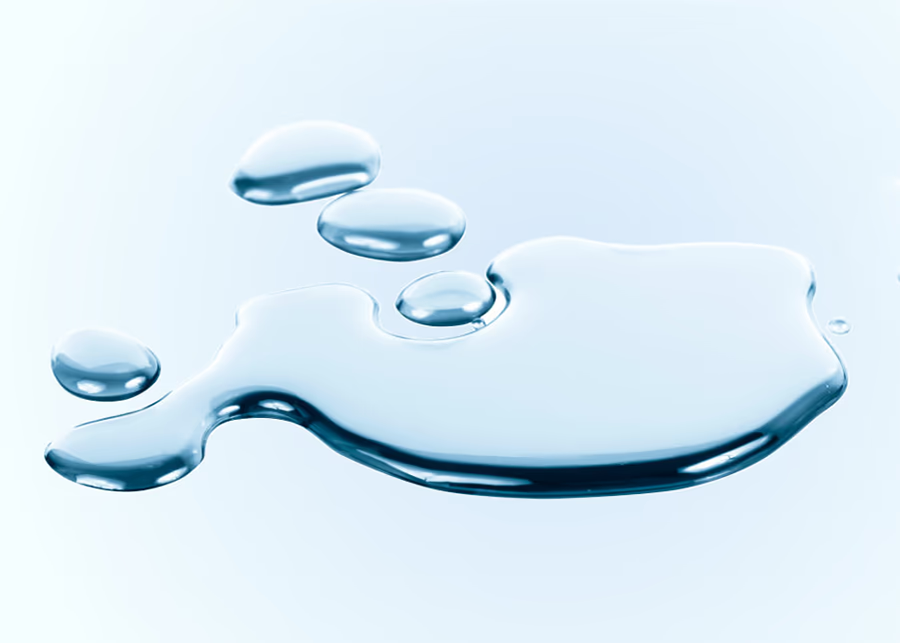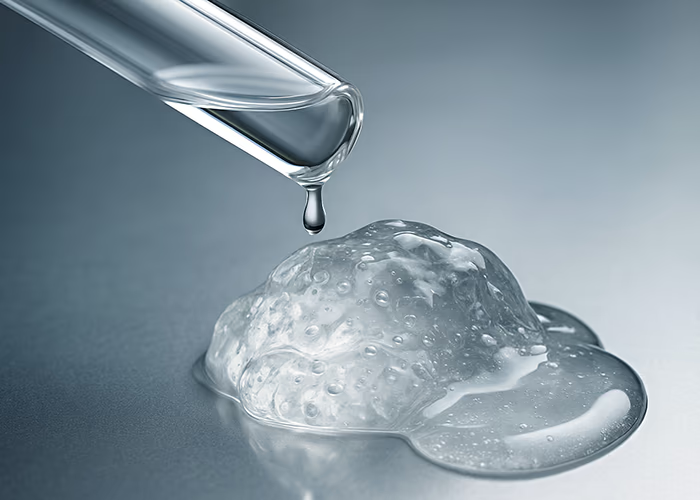Hylase Treatment Munich – When Unwanted Filler Needs to Be Dissolved

Hylase Treatment at a Glance
- Treatment Goal: Dissolving unwanted or overcorrected hyaluronic acid fillers in the face or lips
- Active Ingredient: Hylase (Hyaluronidase) – an enzyme that specifically breaks down hyaluronic acid
- Treatment Duration: About 15–30 minutes
- Anesthesia: Local anesthesia recommended, as Hylase injections can cause a brief burning sensation
- Social Downtime: Usually within a few hours; mild redness or swelling possible
- Result: Noticeable reduction or complete dissolution of filler within 24–48 hours
- Repeat Sessions: One or two treatments may be needed depending on the filler amount and degree of cross-linking
- Risks: Mild swelling, bruising, allergic reactions, or unintended breakdown of nearby natural hyaluronic acid deposits
- Cost: From approximately €200 for dissolving 0.5 ml of filler; larger corrections typically €400 or more

What is Hylase?
Hylase – The Common Trade Name for Hyaluronidase in Germany
Hylase is the German trade name for hyaluronidase, an enzyme naturally present in the human body that plays a key role in breaking down hyaluronic acid. It splits hyaluronic acid into smaller molecules, loosening the surrounding tissue — a physiological process that supports natural tissue regeneration. In medicine, this mechanism is used to enhance the absorption of injected medications. Hylase was originally applied in ophthalmic surgery to improve the effectiveness of local anesthesia.
Hylase for Corrections and Complications After Filler Treatments
The ability of hyaluronidase to dissolve hyaluronic acid precisely makes it essential in aesthetic medicine. It allows for the safe correction of undesired filler results, providing an important safety net in treatments with hyaluronic acid. Hylase is the only substance that can selectively break down fillers, which is why every qualified medical practice using hyaluronic acid should keep it readily available.
Hylase for Arterial Occlusion – Emergency Use
In rare cases, filler injections can lead to a vascular blockage (arterial occlusion) that, if left untreated, may cause tissue necrosis. In such emergencies, Hylase treatment is critical — it can rapidly dissolve the hyaluronic acid in the affected area and restore blood flow. The same mechanism also enables the reversal of unsatisfactory aesthetic outcomes under non-emergency conditions.
Risks Associated With Hylase
The product most commonly used in Germany, Hylase Dessau, is biotechnologically derived from animal tissue (bovine testes) and therefore carries a potential risk of allergic reaction that must always be discussed during medical consultation. Hylase should not be administered during pregnancy or breastfeeding, which is one of the reasons hyaluronic filler treatments are not recommended during these periods.
When Is the Use of Hylase Appropriate?
Waiting for Natural Filler Degradation in Mild Cases
Because Hylase treatment is not entirely risk-free and hyaluronic fillers naturally degrade over time, enzymatic dissolution is not always necessary. In cases of minor or barely visible irregularities, it is often advisable to simply wait for the body to break down the filler naturally.
Weighing Hylase Costs and Benefits Carefully
From a practical standpoint, restraint is often reasonable. To fully dissolve just 1 ml of hyaluronic filler, typically two injections of 1 ml Hylase (150 units each) are required. In my Munich practice, this results in treatment costs of €400 or more. When factoring in the cost of a subsequent filler session, correction can become expensive.
Hylase for Complications After Filler Treatments
The use of Hylase in emergencies is standard in all practices offering hyaluronic injections. Such cases do not always involve arterial occlusion. Inflammatory swellings that do not respond to treatments like corticosteroids may also require Hylase. These reactions occur most often in sensitive areas such as the tear trough—in my practice, the majority of Hylase applications involve precisely this region.
Hylase for Unfavorable Lip Filler Results
Among the most common aesthetic indications for Hylase are asymmetrical or overfilled lips after filler injections. These issues typically result from uneven filler distribution or injection technique errors. While rare overall, such complications are more likely in delicate zones like the tear trough and lips. Lip corrections with Hylase are therefore the most frequent reason new patients visit my Munich practice—often after procedures performed by inexperienced injectors.
When Can Hyaluronic Filler Be Reapplied After Hylase?
A frequent question concerns the timing of new filler treatment after Hylase. Recommendations range from several days to a few weeks. Given that the half-life of hyaluronidase is only a few minutes, it is highly unlikely that active enzyme remains after 24–48 hours. A new hyaluronic filler treatment can therefore generally be performed after a short interval, provided the treated area shows no residual irritation.t.ktion keine größeren Mengen von Hylase mehr zirkulieren. Dafür spricht die sehr kurze Halbwertszeit von Hyaluronidase, die im Minutenbereich liegt.
Treatment Procedure
- Consultation and Medical Assessment
Before every Hylase treatment, a thorough medical consultation is conducted to discuss benefits, risks, and possible side effects. The physician determines whether Hylase is truly necessary or if it is better to wait for the filler to degrade naturally. - Cleansing and Anesthesia
The treatment area is carefully cleansed and disinfected, followed by the application of a numbing cream that takes about 30 minutes to take effect. - Hylase Injection
The hyaluronidase is precisely injected into the targeted area using a fine needle. Since Hylase does not contain lidocaine, patients may feel a slight burning sensation during injection. - Onset of Action
The effect begins immediately; within 12 to 24 hours, the unwanted hyaluronic acid is broken down and the result becomes visible. - Aftercare
The treated area is cooled to reduce redness and swelling. Patients should avoid sun exposure, sauna, and exercise for about 24 hours after the procedure.
Risks and Possible Side Effects
Allergic Reactions and Intolerances
A Hylase treatment is generally well tolerated, even in higher doses. However, because the commonly used German formulation Hylase Dessau is derived from bovine protein, allergic reactions may occur, though they are rare. In isolated cases, such reactions can be severe. Patients should always inform their physician of any known allergies or sensitivities to bovine protein before treatment. Any clinic using Hylase must be equipped for emergency management of anaphylactic reactions. Alternatively, recombinant (non-animal) hyaluronidase preparations can reduce this allergy risk.
Aesthetic Risks
The enzyme hyaluronidase acts non-specifically, dissolving both injected filler and naturally occurring hyaluronic acid. In high doses, this may cause a temporary volume loss in the treated area. Although the body quickly regenerates its natural hyaluronic acid, the effect can remain visible for several weeks and be perceived as aesthetically undesirable.
Dosage: Conservative for Corrections, Higher in Emergencies
In my Munich practice, I use a low-dose approach for aesthetic corrections to preserve natural results and avoid unnecessary volume reduction. To dissolve 1 ml of hyaluronic filler, I typically use about 300 units of Hylase. In true emergencies, particularly with vascular complications such as vessel occlusion, a significantly higher dosage is required to restore blood flow promptly.
When Should Hylase Not Be Used?
Contraindications for Hylase Treatment:
- Known allergy to hyaluronidase or bovine protein
- Congenital heart defect
- Active infection in the treatment area
- Existing swelling caused by insect bites or stings
- Current cancer diagnosis
- Pregnancy (from the 28th week onward; earlier only in emergencies)
- Breastfeeding period
Cost of a Hylase Treatment
Hylase costs depend on the type of intervention and the amount of enzyme used, which in turn is determined by the volume of hyaluronic acid to be dissolved. In my Munich practice, prices typically range between €200 and €400, corresponding to about 0.5–1 ml of filler. Individual treatments are billed according to the German Medical Fee Schedule (GOÄ), so actual costs may vary from these guide prices.
Why Choose Dr. Strobl for Hylase Treatment in Munich?

- Extensive experience from numerous successful treatments with hyaluronic acid and Hylase across all facial areas
- In-depth medical expertise specializing in aesthetic wrinkle therapy, hyaluronic treatments, and the management of filler complications
- All injections performed personally by Dr. Eva Maria Strobl for maximum safety and precision
- Ongoing advanced training with leading experts in hyaluronic acid applications
- Evidence-based approach with precise dosing and modern materials to ensure safe, controlled results
- Focus on natural outcomes – targeted correction without overtreatment or unnecessary volume loss
- Centrally located Munich practice, easily accessible by public transport, taxi, or car
- Transparent pricing and fair value for money
- Personal follow-up care and direct availability for questions via phone, email, or WhatsApp
- High patient satisfaction, documented by numerous positive reviews on Google, ProvenExpert, and Jameda
FAQ – Hylase in Munich
Yes. Hylase acts non-specifically, breaking down both injected and naturally occurring hyaluronic acid. However, the body’s own hyaluronic acid regenerates quickly, so the effect is only temporary.
Yes, but effectiveness depends on the degree of cross-linking. Highly cross-linked fillers usually require multiple sessions or a higher dose to achieve complete dissolution.
Yes, but it’s best to wait at least 24 to 48 hours until the enzyme has been fully broken down. After that, a new hyaluronic filler treatment can be performed once the tissue is calm and stable.

About the Author:
Dr. med. univ. Eva Maria Strobl is the owner of LIPS and SKIN Aesthetic Medicine practice in Munich. She is a trained specialist in general medicine (MedUni Vienna) and has over 10 years of specialization in non-surgical aesthetic procedures. Dr. Strobl is a member of the German Society for Aesthetic Botulinum Therapy e.V. (DGBT), the German Society of Anti-Aging Medicine e.V. (GSAAM) and of Network Global Health. She publishes regularly on her blog and on DocCheck.
Sources for This Content:
Sattler et al, Filler in der ästhetischen Medizin, KVM Verlag
Seo, Facial Volumization with Fillers, Springer
Esteve Pharmaceuticals GmbH, Hylase Dessau Information for Medical Professionals
